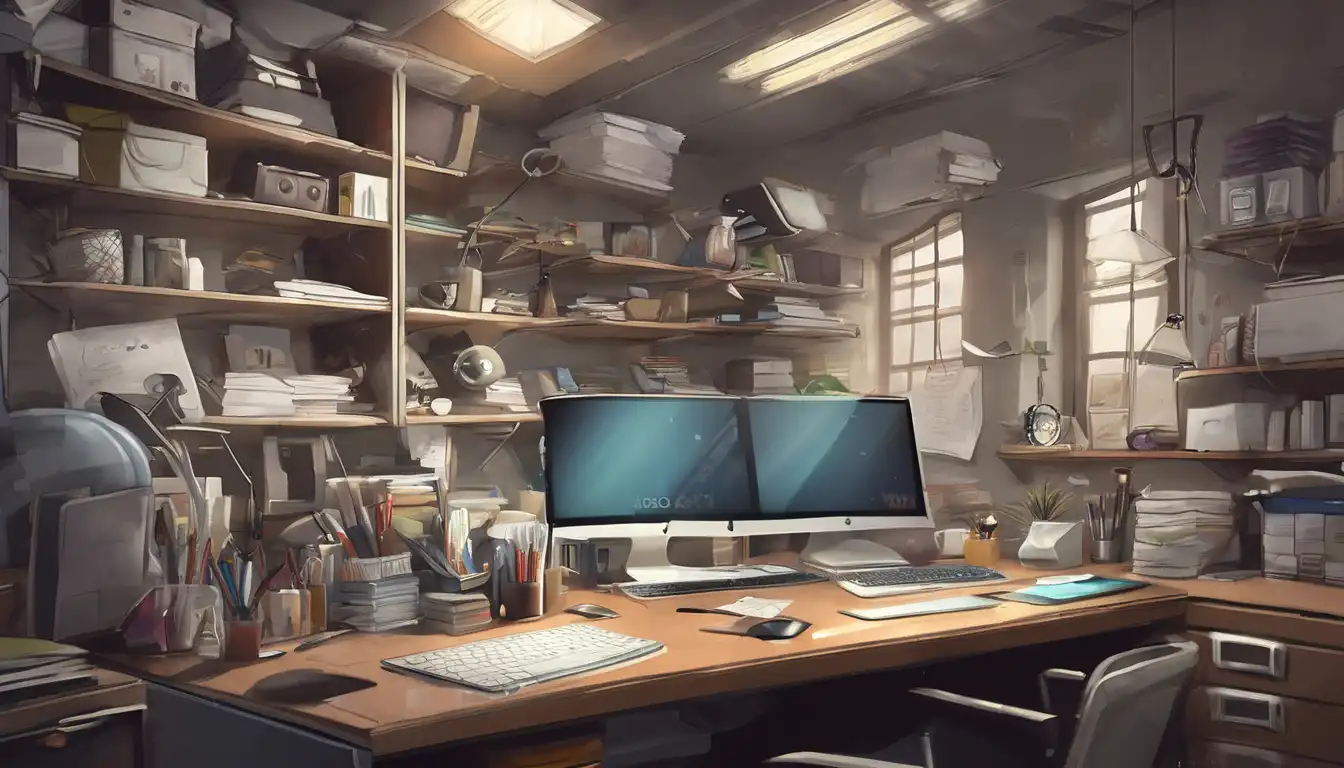Why Your Workspace Matters for Focus
Your physical environment plays a crucial role in your ability to concentrate and maintain productivity. Research shows that a cluttered workspace can increase stress levels by up to 30% and significantly reduce cognitive performance. When your desk is disorganized, your brain has to work harder to filter out distractions, leaving less mental energy for the tasks that matter most.
Creating an optimized workspace isn't just about aesthetics—it's about designing an environment that supports your brain's natural focus mechanisms. By implementing strategic organization techniques, you can reduce decision fatigue, minimize distractions, and create a space that naturally guides you toward productive work.
The Psychology of Workspace Organization
Understanding why organization affects focus begins with recognizing how our brains process environmental cues. A clean, organized space sends signals to your subconscious that it's time for focused work. Conversely, visual clutter creates cognitive overload, forcing your brain to constantly process unnecessary information.
Studies from neuroscience reveal that organized environments help activate the prefrontal cortex—the area responsible for executive functions like planning, decision-making, and concentration. When your workspace is orderly, your brain can allocate more resources to the task at hand rather than constantly managing environmental stimuli.
7 Essential Strategies for Workspace Optimization
1. Implement the Zoning Method
Divide your workspace into distinct functional zones. Create separate areas for computer work, writing, reference materials, and personal items. This spatial organization helps your brain associate specific locations with particular types of work, making it easier to transition between tasks and maintain focus.
Start by identifying your primary work activities and allocate dedicated spaces for each. Keep frequently used items within arm's reach and store less essential materials in designated drawers or shelves. This approach reduces the time spent searching for items and minimizes unnecessary movement during work sessions.
2. Master Cable Management
Tangled cables create visual chaos and can be a significant source of distraction. Invest in cable organizers, zip ties, or adhesive clips to keep wires neatly arranged. Consider using a cable management box to conceal power strips and excess cord length.
Proper cable management not only improves aesthetics but also reduces safety hazards and makes it easier to clean your workspace. A clean cable setup contributes to an overall sense of order that supports mental clarity.
3. Optimize Your Lighting Setup
Lighting significantly impacts focus and eye strain. Position your desk to maximize natural light without creating screen glare. Supplement with adjustable task lighting that you can direct precisely where needed.
Consider using full-spectrum LED bulbs that mimic natural daylight, which has been shown to improve alertness and reduce eye fatigue. Avoid harsh overhead lighting that creates shadows or causes screen reflections.
4. Create a Paperless System
Physical paperwork is one of the biggest contributors to workspace clutter. Implement a digital filing system using cloud storage and document management software. Scan important documents and develop a consistent naming convention for easy retrieval.
For essential physical documents, use a simple filing system with clearly labeled folders. Regularly purge unnecessary papers to prevent accumulation. This approach not only clears physical space but also makes information more accessible.
5. Personalize Strategically
While personal items can make your workspace feel comfortable, too many can become distractions. Choose 2-3 meaningful items that inspire motivation without cluttering your visual field. Position personal items where they won't compete for attention with work materials.
Research suggests that plants can improve air quality and reduce stress, making them excellent additions to any workspace. Choose low-maintenance varieties that won't require constant attention during work hours.
6. Implement the 5-Minute Daily Reset
Develop the habit of spending the last five minutes of each workday resetting your workspace. Return items to their designated places, clear surfaces, and prepare for the next day. This simple practice prevents clutter from accumulating and ensures you start each day with an organized environment.
This daily reset ritual also serves as a psychological cue that the workday is ending, helping you mentally transition away from work mode and reducing the likelihood of work-related stress carrying into your personal time.
7. Optimize Ergonomics for Sustained Focus
Physical comfort directly impacts your ability to maintain focus. Ensure your chair supports proper posture, your monitor is at eye level, and your keyboard and mouse are positioned to prevent strain. Discomfort is a significant distraction that can derail concentration.
Consider investing in ergonomic accessories like monitor arms, adjustable desks, or supportive chair cushions. Proper ergonomics not only improves focus but also prevents long-term health issues associated with prolonged sitting.
Maintaining Your Organized Workspace
Organization is an ongoing process, not a one-time event. Schedule monthly reviews to assess what's working and what needs adjustment. As your work evolves, your organizational systems should adapt accordingly.
Develop simple maintenance habits, such as dealing with incoming items immediately rather than letting them pile up. Use the "one in, one out" rule for physical items to prevent gradual clutter accumulation. Regular maintenance ensures your optimized workspace continues to support your focus long-term.
The Impact on Productivity and Well-being
An organized workspace delivers benefits beyond improved focus. Users typically report reduced stress levels, faster task completion, and increased job satisfaction. The mental clarity gained from an optimized environment often leads to better decision-making and creative problem-solving.
Remember that workspace organization is highly personal—what works for one person may not work for another. The key is to experiment with different approaches and notice how each affects your focus and productivity. Start with small changes and build toward a system that feels natural and sustainable for your work style.
By investing time in organizing your workspace, you're not just cleaning your desk—you're designing an environment that actively supports your cognitive performance and professional success. The return on this investment manifests in sharper focus, reduced stress, and consistently higher quality work output.
